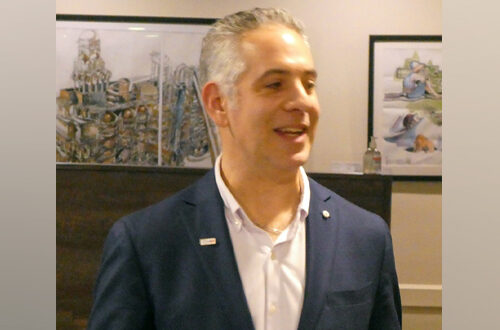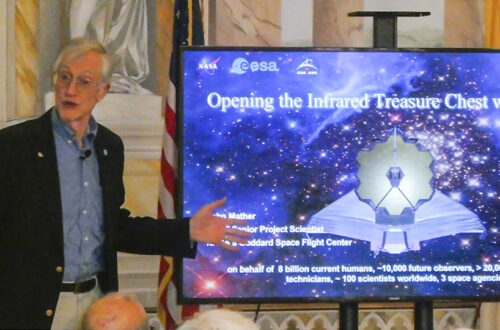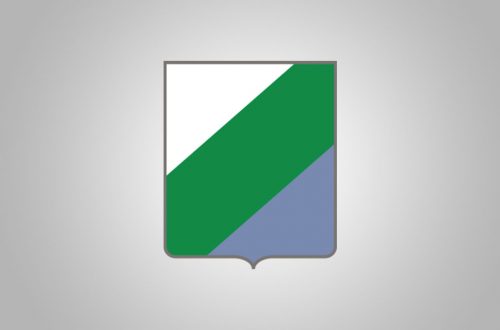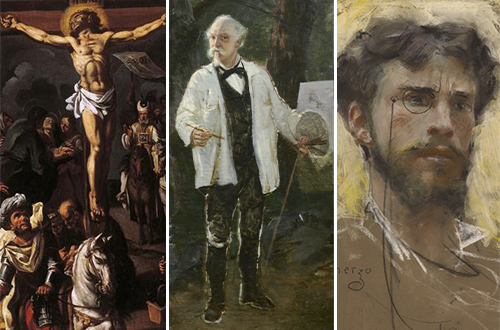
More Notable Artists from Abruzzo and Molise
By Joseph “Sonny” Scafetta, Jr.
(Editor’s Note: Continuing with our series on the many individuals from Abruzzo and Molise who have made a mark on the world, we feature three more painters from our regions.)
Paolo Gamba
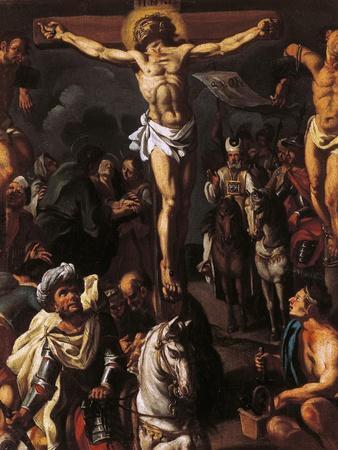
Credit: AllPosters.com
Paolo Gamba was born in the community of Ripabottoni (population 4,425 in the First Census of 1861; 644 in the 2004 Census) in the province of Campobasso in what is now the region of Molise on October 29, 1712. His father was a decorative painter of the Mannerist School. When he was 19, Paolo met with the Bishop of Larino who gave him a recommendation so that he could study under Francesco Solimena (1657-1747) in Naples.
After his apprenticeship ended, Gamba returned to Molise to paint sacred subjects in the Baroque style. Starting in 1738 at age 26, he painted for the parish church in Montorio nei Frentani. Next, he painted The Offering of Melchisedech for the Church of Santa Maria Assunta in Fossalto. However, his first documented works are a series of frescoes done in 1740 in the sacristy and the church of the convent of the Cappuccini in Sant’Elia a Pianisi which adjoins Ripabottoni. In 1741 at age 29, he painted his most renowned works: 14 canvases depicting the Way of the Cross in the Monastery of Sant’Alfonso in nearby Colletorto. One of the 14 canvases is shown here. They are noted for their strong dramatic showing of the passion and death of Christ. He next painted Madonna del Purgatorio for the Church of San Giovanni Battista, also in Colletorto. In 1747, he painted frescoes for the cupola of the Church of San Francesco in Larino.
Over the course of the next 24 years, he painted in various local churches. For the Church of Santa Maria Assunta in Ripabottoni, he painted canvases depicting Madonna of the Purgatory, Madonna of the Rosary of Saint Roch, and The Presentation of the Virgin at the Temple. While there, he also painted frescoes including Virtue and Prophets in medallions. For the Church of Maria della Concezione, also in Ripabottoni, he painted the Immaculate Conception, Assumption of the Virgin, and The Annunciation, as well as medallions with stories of the New Testament.
In 1771 at age 59, he painted in the Church of San Francesco in Agnone. In early 1774, he returned to the Church of Santa Maria Assunta in Fossalto to paint frescoes in the presbytery depicting The Sacrifice of Isaac, Transport of the Holy Ark, and Cain and Abel. Later that year, he painted The Immaculate Conception Surrounded by the Evangelists in the apse of the Church of San Martino in Campodipietra. His last work was done in 1779 in Matrice where, for the Church of Sant’Antonio, he painted altar pieces depicting Madonna del Carmelo and Birth of the Virgin.
Gamba died in his home in Ripabottoni on December 26, 1782, at age 70. Being deeply religious, he believed that vanity is a sin, so he did not paint a self-portrait. He never married.
Sources:
Giuseppe Palizzi
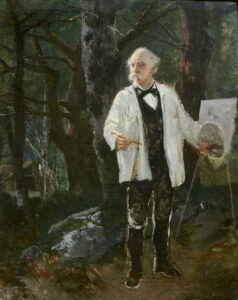
Credit: Wikipedia
Giuseppe Palizzi was born on March 19, 1812, in the town of Lanciano in the province of Chieti in the region of Abruzzo. He was named Giuseppe by his parents because he was born on the feast day of San Giuseppe. When he was three years old, his parents moved their family to Vasto which was a larger city on the coast of the Adriatic Sea. Here along the seacoast, he began to show his artistic abilities from a very early age.
After he turned 23 years old in 1835, he moved to Naples and enrolled at the Royal Institute of Fine Arts where he encountered the painters of the Posillipo School. There he presented historical landscapes at the yearly shows of the Institute. However, being intolerant of rules and expected mannerisms, after nine years in Naples, the 32-year-old Giuseppe pulled up roots and relocated to Paris in 1844. After a short period of surveying the land, he decided to move to the village of Bourron-Marlotte which was located on the edge of the forest of Fontainebleau outside of the city. This forest became the primary subject of his painting which developed in the direction of painstaking realism through the influence of the Barbizon School.
Giuseppe kept in communication by letter with his younger brother Filippo who had stayed back in Vasto. In his letters, Giuseppe shared with Filippo the results of his artistic explorations. For ten years, Giuseppe exhibited regularly at the Paris Salon. In 1854, he made a short trip to Naples to visit his friends there, followed by a short stay in Vasto to visit family members and to sketch local pastoral scenes outside of the city.
Before the year was up, he returned to Paris where he achieved great success with pastoral landscapes inspired by his stay in Vasto. His paintings from this period of his life often included figures of humble laborers. In 1859, he was made a member of the Legion of Honor by the French Government. Three years later in 1862, he traveled to Rome to receive the Cross of the Knights of Saint Maurice and Saint Lazarus from the new Italian Government.
Upon his return to the Paris suburbs bordering the forest of Fontainebleau, he immersed himself in his work and dedicated himself to painting directly from nature. He also undertook intensive activities with various artistic organizations in the French capital. While doing so, he met the main artists and intellectuals of the period. He was further intrigued by the newfangled art of photography and its ability to capture precisely the images of the operator.
Towards the end of his career, he befriended many painters of the impressionistic circle, but he declined to adopt their new style of painting, which he considered “imprecise” in one of his last letters to his brother. As a lifelong bachelor, Giuseppe died in Paris on January 14, 1888, about two months shy of his 76th birthday. His surviving paintings remain in the principal European art galleries and in private collections.
Sources:
- Vasto Domani at page 5, October, 1988.
- https://vastesiworld.org/listing/palizzi-giuseppe, accessed September 25, 2020
- https://en.wikipedia.org/wiki/Giuseppe_Palizzi, accessed September 26, 2020
Francesco Paolo Michetti
Francesco Paolo Michetti was born in the community of Tocco da Casauria (population 2,662 in the 2017 Census) in the province of Pescara in the region of Abruzzo, on October 2, 1851. After his father died when he was a boy, his mother sent him to work for a local fresco painter. In 1868 when he was not yet 17, he was awarded a stipend by his province to study at the Accademia (now Istituto) in Naples where he was influenced by artists of the School of Resina.
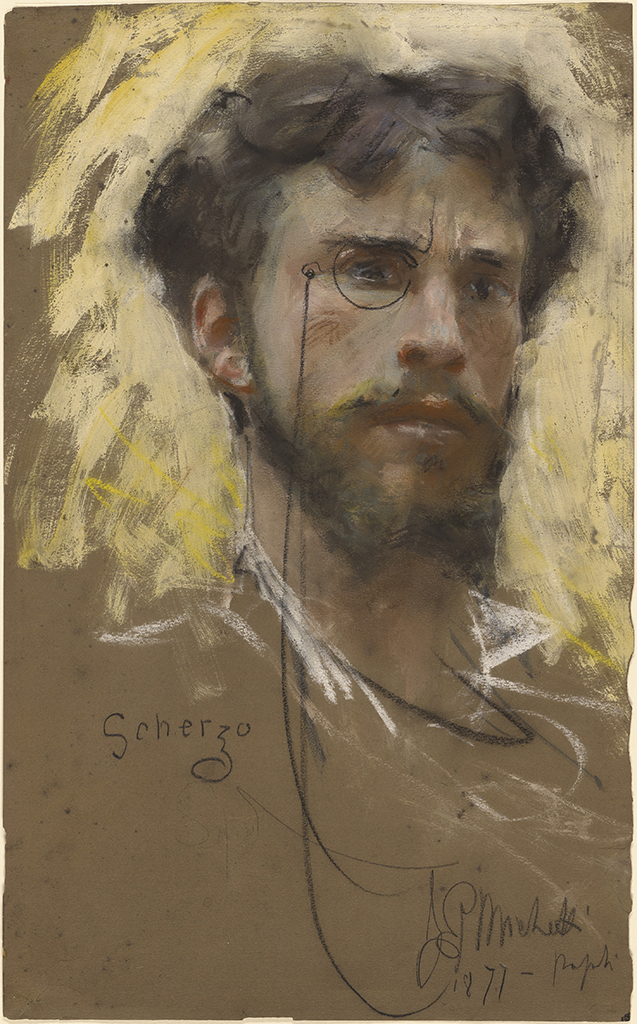
Credit: getty.edu
After a year, disciplinary problems caused the head of the Accademia to send him home where it was believed that his temperament would benefit more from real life situations. Nevertheless, he was allowed to continue to receive his stipend. Abruzzo was his emotional and aesthetic inspiration. He captured its people, animals, and local events, like religious processions, in paintings with luminous colors and vibrant light. When his stipend ran out in 1871, he moved to Paris where he exhibited Dream of Innocence and The Pumpkin Harvest in the Salon of 1872. He also exhibited at the Salons in 1875 and 1876. In 1877, with his Corpus Christi Procession, a highly colorful depiction of a festival, he became recognized as one of the best exhibitors. In that same year, he also painted his self-portrait showing himself at age 26. During the next year, he exhibited Springtime and Love, a depiction of families enjoying a hilltop above a village with a broad view of the Adriatic Sea and the sky. At the National Exposition in Torino in 1880, he exhibited Palm Sunday. At the Exhibition in Milano in 1881, he was the most prolific exhibitor with 34 paintings, mostly studies of faces, full of sentiment, and seascapes, full of windblown sails.
In 1883, he purchased the Santa Maria di Gesu’ Convent in Francavilla al Mare, an Adriatic resort in the province of Chieti, as his home and studio. He then married a local girl and had three children, Elvira, Giorgio and Liberato. For the next 17 years, his “conventino” was a meeting place for Abruzzese artists and exponents of culture, including Gabriele D’Annunzio. Michetti’s painting Daughter of Iorio, completed in 1895, soon inspired D’Annunzio to write a tragedy with the same name. In 1896, Michetti was named a member of the Accademia Pontaniana in Naples.
After a 19-year gap, he exhibited many of his most recent paintings again at the Universal Exposition in Paris in 1900. However, a lukewarm response to his new work enraged him so much that he abandoned painting and closed his studio. He generally lived the rest of his life as a recluse.
Nevertheless, he received belated recognition. In 1903, he was admitted into the Roman Academy of Saint Luke. In June 1909, he was nominated to be an Italian senator, but declined the nomination. In 1911, he was named honorary president of the regional committee for the Pescara Exposition. In 1913, he was named to the Commission of the National Gallery of Modern Art in Rome. His salary from the National Gallery allowed him to live modestly and to have an influence on new artists. He died from pneumonia in Francavilla al Mare on March 5, 1929, at the age of 77.
Sources, all accessed May 30, 2021:
- https://en.wikipedia.org/wiki/Francesco_Paolo_Michetti
- https://www.getty.edu/art/collection/artists/3317/francesco-paolo-michetti
- https://en.wikipedia.org/wiki/Tocco_da_Casauria
- https://en.wikipedia.org/wiki/Francavilla_al_Mare
March/April 2023



